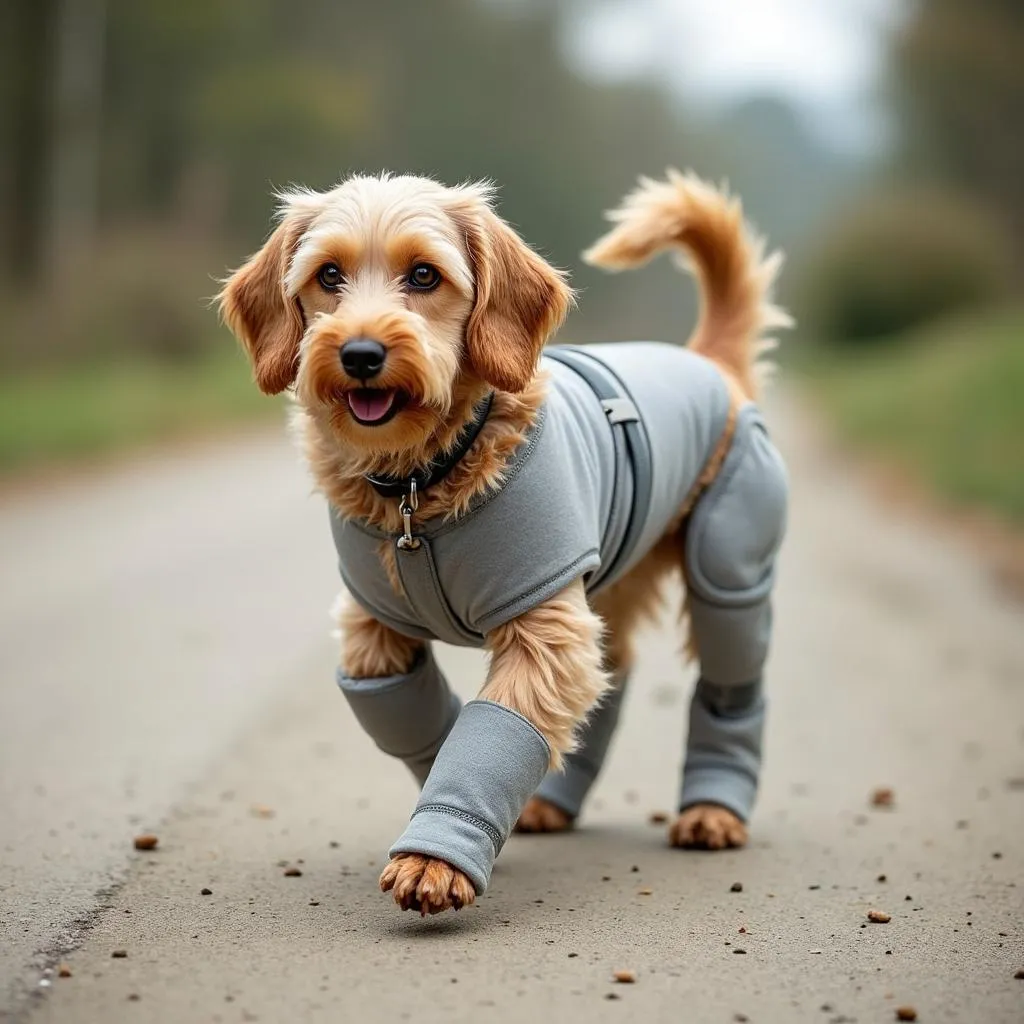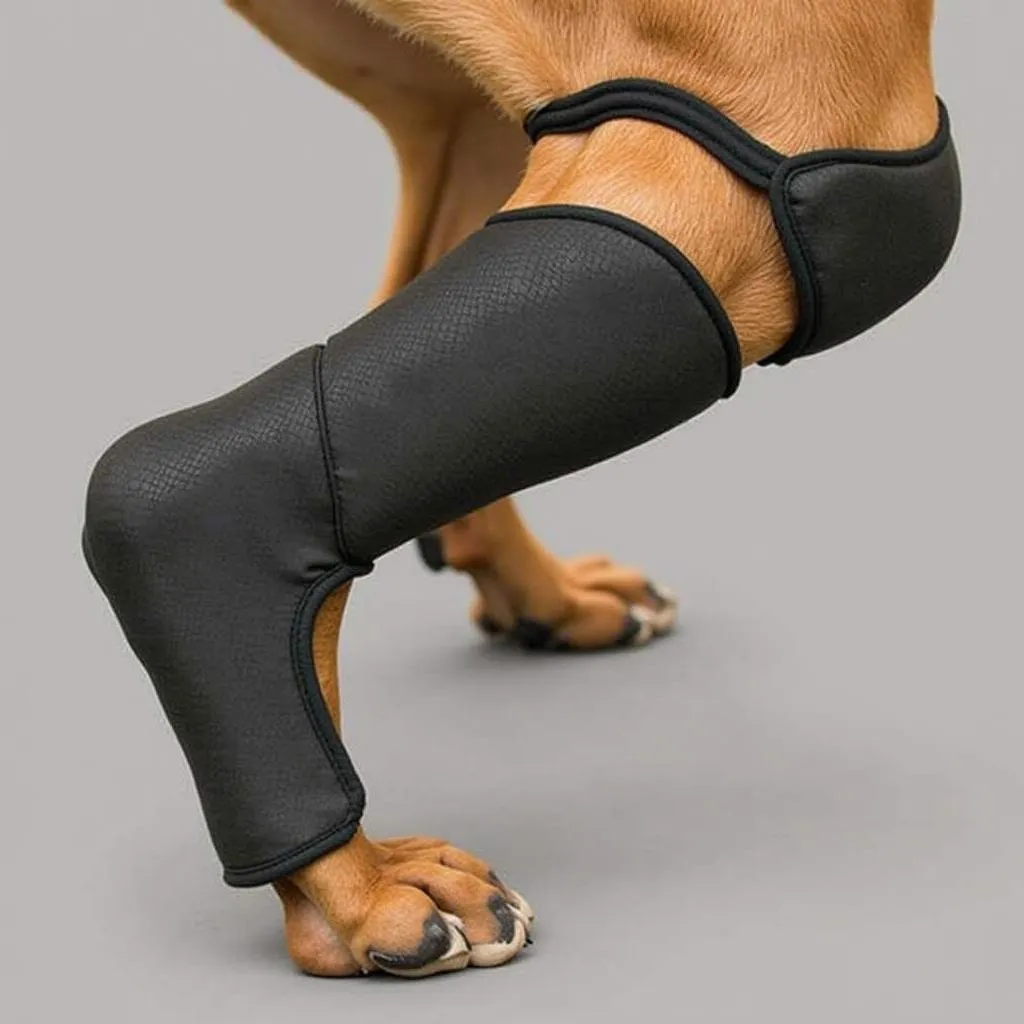Are you looking for ways to help your furry friend recover from an injury? Dogs are known for their boundless energy and love for exploring, but sometimes, accidents happen. Just like us, they can experience broken bones, sprains, and other injuries. In these instances, a dog cast may be recommended by your veterinarian.
What are Dog Casts?
A dog cast is a rigid, supportive structure that is placed around a broken or injured limb. It helps to immobilize the area, allowing it to heal properly. Think of it like a “temporary splint” for your dog, but even more secure.
Why do Dogs Need Casts?
Dog casts are often used to treat:
- Broken bones: Fractures are common in dogs, especially in playful breeds like Golden Retrievers or those who enjoy a good romp in the park.
- Ligament tears: Tears in ligaments can cause instability in the joint.
- Soft tissue injuries: Injuries to tendons, muscles, and other soft tissues can also be treated with a cast.
Types of Dog Casts
There are various types of casts used for dogs, each with its own advantages:
1. Fiberglass Casts:
 Fiberglass Dog Cast: Lightweight & Durable
Fiberglass Dog Cast: Lightweight & Durable- These are the most common type, made from a lightweight material that is strong and durable.
- They are also breathable, allowing air to circulate around the cast and waterproof, so your furry friend can enjoy a splash in the water without worrying about getting the cast wet.
2. Plaster Casts:
 Plaster Dog Cast: Traditional & Affordable
Plaster Dog Cast: Traditional & Affordable- While traditional and less expensive, these casts are heavier and less breathable than fiberglass casts.
3. Splints:
 Dog Splint: Customized & Adjustable
Dog Splint: Customized & Adjustable- Splints are made of materials like plastic or metal and are often used for injuries that do not require complete immobilization. They are customized to fit the dog’s limb and can be adjusted as needed, making them lightweight and breathable.
How are Dog Casts Applied?
Applying a cast to your furry friend is a simple procedure that your veterinarian will perform. It typically involves the following steps:
- Shaving: The area where the cast will be applied is shaved to remove any hair that might interfere with the cast.
- Padding: A soft padding material is placed around the limb to protect the skin.
- Casting Material: The chosen cast material is then applied and shaped to the limb.
- Drying: The cast is allowed to dry completely before your dog can go home.
Caring for Your Dog in a Cast
Taking care of your dog while they have a cast is crucial for ensuring proper healing. Here are some tips:
- Keep the cast dry: This is especially important with plaster casts. While fiberglass casts are generally waterproof, it’s still a good idea to avoid prolonged exposure to water.
- Prevent licking or chewing: Dogs love to lick and chew their paws, so it is important to prevent your dog from licking or chewing the cast. A cone-shaped Elizabethan collar (commonly known as a “cone of shame”) can be very helpful for this.
- Monitor for signs of infection: Look for any signs of swelling, redness, or discharge from the area around the cast. These could be signs of infection and should be reported to your veterinarian immediately.
- Regularly clean the cast: Clean the cast with a damp cloth and mild soap. Avoid using harsh cleaners or submerging the cast in water.
- Exercise: Your veterinarian will advise you on how much exercise is appropriate for your dog while in a cast. They may suggest limited activity, such as short walks or playtime in a controlled environment.
How long does a Dog Cast Stay On?
The length of time a dog cast needs to stay on depends on the severity of the injury. Generally, it can take 4-6 weeks for a broken bone to heal. However, your veterinarian will monitor your dog’s progress and provide instructions based on their specific case.
What happens after the Cast is removed?
Once the cast is removed, your dog’s limb will need to be gradually strengthened. Your veterinarian may recommend:
- Physical therapy: This can help your dog regain muscle strength and improve range of motion.
- Prescription medications: Anti-inflammatory medications can help to reduce swelling and pain.
- Home exercises: Simple exercises that you can do at home will help your dog recover more quickly.
Questions about Dog Casts?
Do you have more questions about dog casts? We’re here to help! Here are some common questions people ask:
- Can dogs swim with a cast? It’s best to avoid swimming with a plaster cast, but fiberglass casts are generally waterproof. However, it’s always a good idea to check with your veterinarian before letting your dog swim.
- What if my dog bites the cast? If your dog tries to bite the cast, you may need to use a cone to prevent them from doing so. You can also try covering the cast with a soft material like a towel.
- Can I use a hairdryer to dry the cast? It’s best to air dry the cast, as using a hairdryer can create a risk of burns.
Choosing the Right Veterinarian for your Dog
It’s important to choose a veterinarian with experience in treating dogs with casts. Ask your friends and neighbors for recommendations, or search for a veterinarian who specializes in orthopedic surgery.
Cost of a Dog Cast
The cost of a dog cast can vary depending on the type of cast, the size of your dog, and the location of your veterinarian. However, you can expect to pay anywhere from $100 to $500 for a cast.
A Story of Hope
We once had a client, a small terrier mix named Lucky, who came in with a fractured leg. He was a playful puppy, always bouncing around, and his injury broke the hearts of his family. We applied a fiberglass cast to his leg, and with careful care and a whole lot of love, Lucky made a full recovery!
Remember
Dog casts are an important part of treating injuries and promoting healing. They provide support and stability, allowing your furry friend to recover quickly and get back to their playful antics. If you notice any signs of infection or have any concerns about your dog’s cast, contact your veterinarian immediately.
Contact us today for a consultation with our experienced veterinarians. We’re here to help your furry friend get back on their paws!
Call us at: 0372960696
Email us at: [email protected]
Visit us at: 260 Cầu Giấy, Hà Nội
We have a team of caring professionals available 24/7 to answer your questions and provide the best care for your beloved pet.
Leave a Reply
You must be logged in to post a comment.